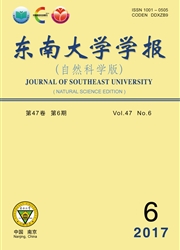

 中文摘要:
中文摘要:
比较分析被进行在庆祝交叉的能力和安全上比较出租车和私人汽车的司机的行为的特征的效果。数据在十六点被收集在在中国的南京区域的庆祝交叉。出租车和私人汽车的司机的拿风险的行为被比较。结果建议 19.9% 出租车司机承诺了至少一识别危险行为,它 2.37 倍高于私人汽车(8.4%) 的司机的。交通冲突技术被用来估计出租车和私人汽车的安全效果。为出租车的全面冲突率为私人汽车比那高是 21.4% ,暗示出租车是更可能的涉及冲突。几乎所有能识别交通冲突被归因于出租车司机或私人汽车的司机承诺的拿风险的行为的某些层次,并且出租车司机是更可能的出错在冲突。让步到 right-of-way 和不适当的小巷变化的失败是出租车是在差错的在冲突的领先的原因。研究队进一步在庆祝交叉在队列分泌物特征上学习了出租车的效果。结果证明出租车的存在显著地减少两启动失去的时间和浸透前进。浸透流动率上的出租车的效果依赖于在分泌物流动的出租车的比例,并且浸透流动随出租车的比例的增加评估增加。为为不同拐弯处运动的出租车的各种各样的比例的调整因素然后被计算到份量上在庆祝交叉的能力上评估出租车的效果。
 英文摘要:
英文摘要:
Comparative analyses were conducted to compare the effects of the behavioral characteristics of the drivers of taxis and private cars on the capacity and safety of signalized intersections. Data were collected at sixteen signalized intersections in the Nanjing area in China. The risk-taking behaviors of the drivers of taxis and private cars were compared. The results suggest that 19.9% of taxi drivers have committed at least one of the identified risky behaviors, which is 2.37 times as high as that of the drivers of private cars(8.4%). The traffic conflicts technique was used to estimate the safety effects of taxis and private cars. The overall conflict rate for taxis is 21.4% higher than that for private cars, implying that taxis are more likely to be involved in conflicts. Almost all of the identified traffic conflicts can be attributed to certain levels of risk-taking behaviors committed by either taxi drivers or the drivers of private cars, and taxi drivers are more likely to be at fault in a conflict. Failure to yield to right-of-way and improper lane change is the leading causes of the conflicts in which taxis are at-fault. The research team further studied the effects of taxis on the queue discharge characteristics at signalized intersections. The results show that the presence of taxis significantly reduces both start-up lost time and saturation headways. The effects of taxis on saturation flow rates are dependent on the proportion of taxis in the discharge flow, and the saturation flow rates increase with the increase in the proportion of taxis. The adjustment factors for various proportions of taxis for different turning movements are then calculated to quantitatively evaluate the effects of taxis on the capacity of signalized intersections.
 同期刊论文项目
同期刊论文项目
 同项目期刊论文
同项目期刊论文
 Identifying if VISSIM simulation model and SSAM provide reasonable estimates for field measured traf
Identifying if VISSIM simulation model and SSAM provide reasonable estimates for field measured traf Modeling the Frequency of Traffic Conflicts at Signalized Intersections using Generalized Linear Reg
Modeling the Frequency of Traffic Conflicts at Signalized Intersections using Generalized Linear Reg Evaluating the Impacts of Unconventional Outside Left-Turn Lane Design on Traffic Operations at Sign
Evaluating the Impacts of Unconventional Outside Left-Turn Lane Design on Traffic Operations at Sign 期刊信息
期刊信息
